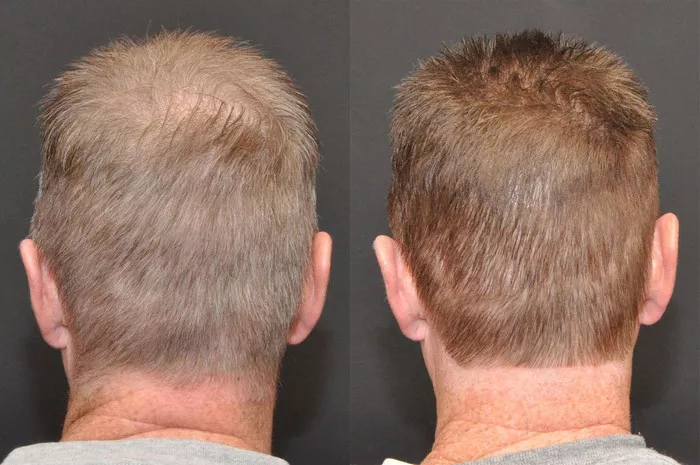Hair loss, particularly receding hairlines, can be a distressing experience for many individuals, impacting self-esteem and confidence. As a solution, hair transplant procedures offer hope by restoring hair to the affected areas. However, one crucial aspect that often concerns individuals considering this option is the cost associated with such procedures. In this comprehensive guide, we will delve into the various factors influencing the cost of hair transplant for receding hairlines, different techniques available, and post-transplant care considerations.
Cost Estimation
When considering a hair transplant for a receding hairline, understanding the potential costs involved is paramount. The cost of a hair transplant can vary significantly depending on several factors, including location, clinic reputation, and the specific technique employed. Generally, in the United States, the cost ranges from $4,000 to $15,000. It’s essential to note that insurance rarely covers hair transplant costs, as these procedures are typically considered elective and cosmetic.
Factors Influencing Cost
1. Number of Grafts or Hairs: Most clinics charge based on the number of grafts (Follicular Unit Transplantation – FUT) or individual hairs (Follicular Unit Extraction – FUE). The more grafts or hairs required, the higher the cost.
2. Extent of Bald Area: The size of the bald area to be transplanted directly affects the cost. Larger areas may require more grafts or hairs, leading to increased expenses.
3. Donor Hair Availability: The availability of healthy donor hair plays a significant role in determining the feasibility and cost of the procedure. If a patient has limited donor hair, additional procedures or techniques may be required, increasing the overall cost.
4. Desired Density: Patients with specific density requirements may incur higher costs, as achieving higher density often necessitates more grafts or hairs, thus increasing the complexity and expense of the procedure.
5. Expectations: Managing patient expectations regarding both the results and the associated cost is crucial. It’s essential for patients to understand what is achievable with a hair transplant and to be realistic about the costs involved.
Different Techniques and Costs
Hair transplant procedures primarily utilize two techniques: Follicular Unit Extraction (FUE) and Follicular Unit Transplantation (FUT). Each technique has its own set of advantages, disadvantages, and associated costs.
1. Follicular Unit Extraction (FUE): FUE is typically more expensive per hair compared to FUT. However, it offers the benefit of minimal scarring, making it a preferred choice for those concerned about visible scars. FUE involves harvesting individual hair follicles from the donor area and transplanting them to the recipient site.
2. Follicular Unit Transplantation (FUT): FUT is usually charged per graft and involves removing a strip of scalp from the donor area, which is then dissected into individual grafts for transplantation. While FUT may leave a linear scar, it provides more grafts compared to FUE, making it a cost-effective option for individuals requiring a larger number of grafts.
It’s essential for patients to weigh the trade-offs between cost, scarring, and graft availability when choosing between FUE and FUT.
Fixed Price Policy (if applicable)
Some clinics follow a fixed price policy for hair transplant procedures, where the final cost is determined after a thorough assessment by the doctor. This approach ensures transparency and helps patients avoid unexpected surprises regarding the total cost of the procedure. Additionally, clinics may offer additional benefits such as free follow-up visits, further enhancing the value proposition for patients.
Post-Transplant Care
After undergoing a hair transplant procedure, proper post-operative care is crucial for optimal results. Most clinics include post-transplant care in the overall cost of the procedure, alleviating concerns about incurring additional charges for necessary follow-up visits and wound care. Patients should follow their surgeon’s instructions diligently to promote proper healing and maximize the success of the transplant.
In conclusion, the cost of a hair transplant for a receding hairline can vary depending on various factors such as the chosen technique, the extent of baldness, and the patient’s specific requirements and expectations. By understanding these factors and carefully considering the available options, individuals can make informed decisions regarding their hair restoration journey. Additionally, choosing a reputable clinic with experienced surgeons can help ensure the best possible outcomes.
FAQs
Can you get a hair transplant just for receding hairline?
Yes, you can get a hair transplant specifically to address a receding hairline. This procedure involves transplanting healthy hair follicles from other parts of your scalp to the areas where your hairline is receding. It’s a common and effective solution for restoring a natural-looking hairline.
Is 1000 grafts enough for a hairline?
The number of grafts required for a hairline transplant depends on various factors such as the extent of hair loss, the desired density, and the characteristics of your hair. In many cases, 1000 grafts can be sufficient to achieve noticeable improvement in the appearance of your hairline. However, for some individuals with more extensive hair loss, a higher number of grafts may be necessary to achieve optimal results.
What is the best age for a hairline transplant?
There isn’t a specific “best” age for a hairline transplant, as it depends on individual circumstances. Generally, candidates for hairline transplants should have stabilized hair loss, which often occurs in their late 20s or older. However, younger individuals experiencing early-stage hair loss may also be suitable candidates after consulting with a qualified hair transplant surgeon.
Will I go bald if my hairline is receding?
A receding hairline doesn’t necessarily mean you will go completely bald. Hair loss patterns vary from person to person, and some individuals may experience only a receding hairline without significant balding elsewhere on the scalp. However, if you’re concerned about hair loss, it’s advisable to consult with a healthcare professional or a hair transplant specialist to explore your options and address any underlying causes.


